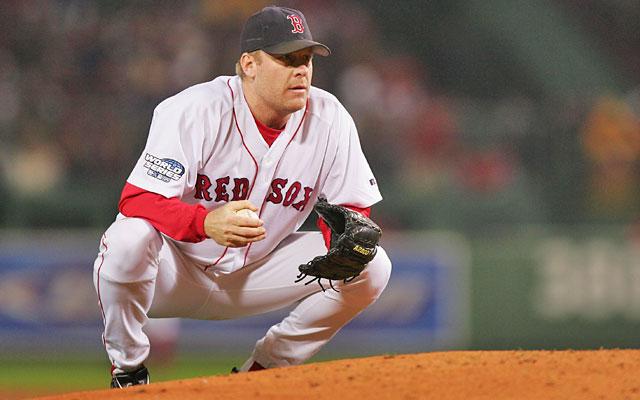In our continuing series of articles on this year’s Baseball Hall of Fame ballot, we now turn our attention to two guys who didn’t enhance their stats through the needle. Unlike the greatly debated case of Roger “the HGH was for my wife” Clemens, Mike Mussina and Curt Schilling have never been linked to PEDs. Each deserves induction.
As I mentioned here, neither Moose nor Schill have Clemens numbers, but they also don’t have his PED baggage.
The Standard for the Hall
We used to believe that the standard for Cooperstown was 300 wins and 3,000 strikeouts. That is actually far from the truth.
There are 75 pitchers in the Hall of Fame. Taking away those who were exclusively or predominantly relief pitchers, including Eck, Rollie Fingers, Gossage, Bruce Sutter, and Hoyt Wilhelm, we’re left with 70. We should also take out Babe Ruth, Satchel Paige, and John Smoltz from the sample.
Ruth only pitched a couple of years and is in the Hall for his bat. Paige, certainly an all-time great, only pitched in the major leagues for part of six seasons after Jackie Robinson broke the color barrier. Smoltz earned induction based on a balanced career of excellence as both a starter (213 wins) and closer (154 saves).
Thanks to our friends at www.baseballreference.com, we know what the average starting pitcher in Cooperstown looks like. They pitched for 18 years, went to four All Star Games, won 253 games, lost 176, had an ERA of 2.98 and struck out 2,153. And, for those readers who appreciate modern, second-order stats, they have a WAR (wins above replacement) of 70 and a WHIP (Walks/Hits per Inning Pitched) of 1.197.
Mussina by the Numbers
Mike Mussina was a great pitcher, but he meets none of the traditional marks for Cooperstown. His 270 career wins are below the magic 300 but are above the Hall average. He also lost fewer games than the typical HOFer.
The five-time All Star struck out 2,813 and had a career ERA of 3.68. His career WAR (83.0) was better than the average Cooperstown pitcher and his WHIP (1.192) is nearly identical. Mussina won seven Gold Gloves, but he never finished higher than fourth in Cy Young award voting.
Schilling Beyond the Numbers
I won’t pretend to be entirely objective about Curt Schilling. I’ve known him for years since his retirement and know that he’s not the caricature some in the media portray him to be. His Hall candidacy ceased resting on his baseball resume a few years ago. His numbers are beyond Hall worthy except for his wins total.
Schill (216-146, 3.46 ERA, 3,116 Ks, 79.9 WAR and 1.137 WHIP) finished second in the Cy Young award three times, and was a six-time All Star. His low win total is often used as an excuse for those who keep him off their ballot. There are 18 starting pitchers in the hall with fewer than 216 wins.
No pitcher in the Hall has Schilling’s post season resume. The three-time world champion is universally understood as the greatest post-season pitcher of the modern era.
In 12 post season series, Shilling went 11-2, had an ERA of 2.23, a WHIP of 0.968, and was a League Championship Series (1993) and World Series MVP (2001). You would need a Pentagon super computer to calculate Schilling’s post season WAR. When the weather turned cold and the competition heated up, against the best hitters in the game, Curt Schilling was the best in baseball.
Tomes have been written about Schilling’s off the field activities. His failed company, his departure from ESPN, his political positions, and his social media presence. Some writers, including Boston’s “favorite” curly-haired boyfriend, have used one or more of these things to justify keeping Schilling out of the Hall. Many of these same writers ignore Curt’s long and substantial charitable work and his Roberto Clements award, but have no issues voting for steroid users who cheated, like Bonds and Clemens.
The Case For Both
If the Hall is really about baseball, and voters truly care how pitchers performed within the context of their era, than both Schilling and Mussina must be inducted. That these two pitchers accomplished what they did, in an era when juiced hitters were breaking every offensive record and when new and smaller ballparks popped up every year, is simply amazing.
To compete clean in the steroid era and achieve to their standard cannot legitimately go unrewarded. Of the pitchers who faced Barry Bonds, the poster child of the steroid era and the most prolific power hitter in history, at least 100 At Bats, Schilling held him to a lower batting average (.263) than both Greg Maddux (.265) and John Smoltz (.275). Both are in the Hall. Both were elected on their first ballot.
